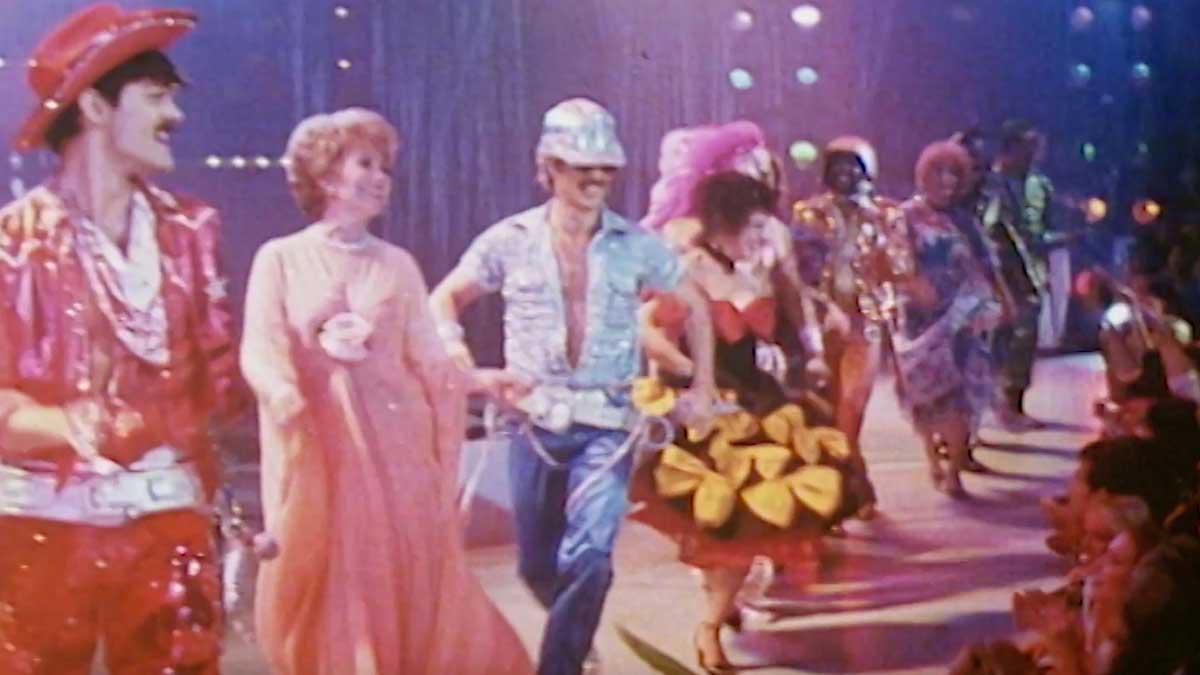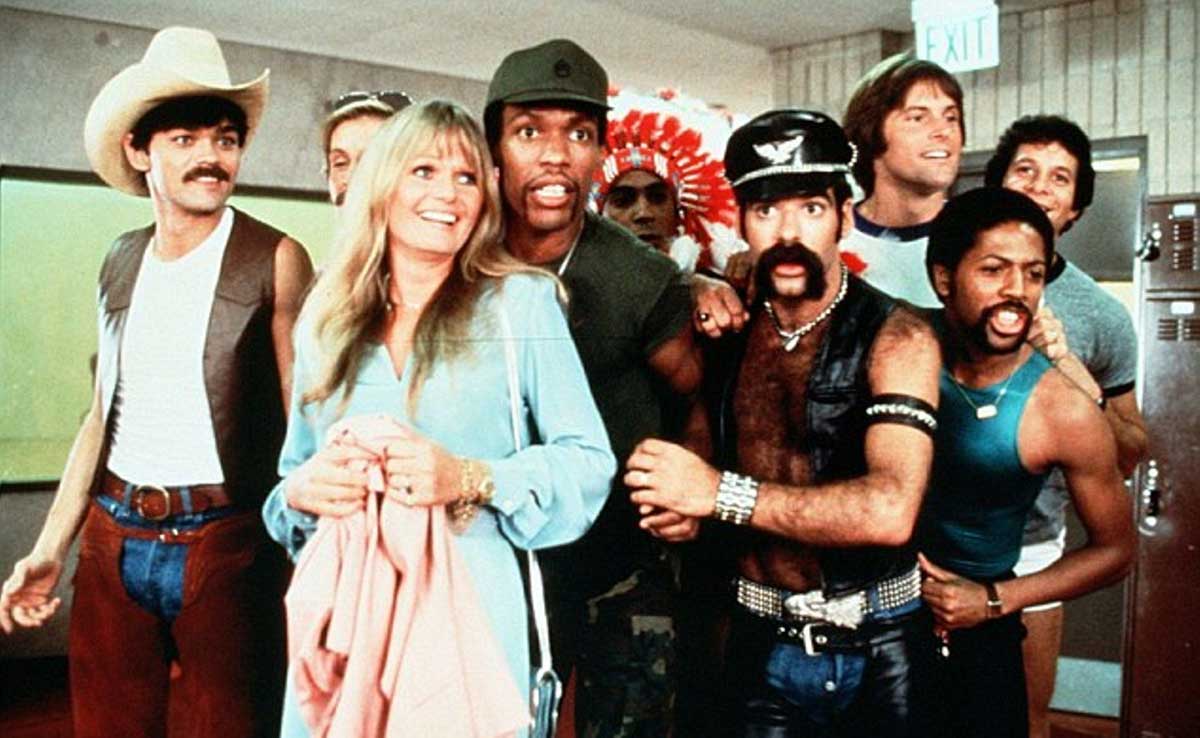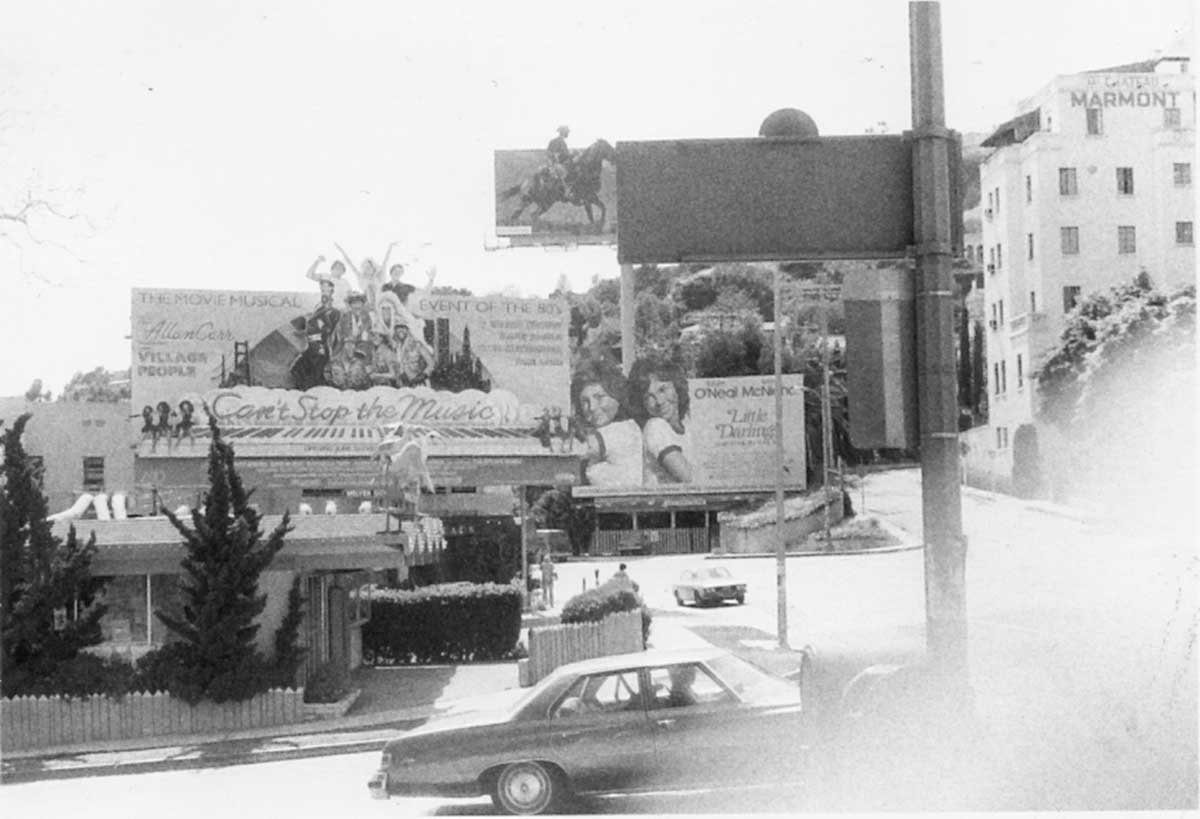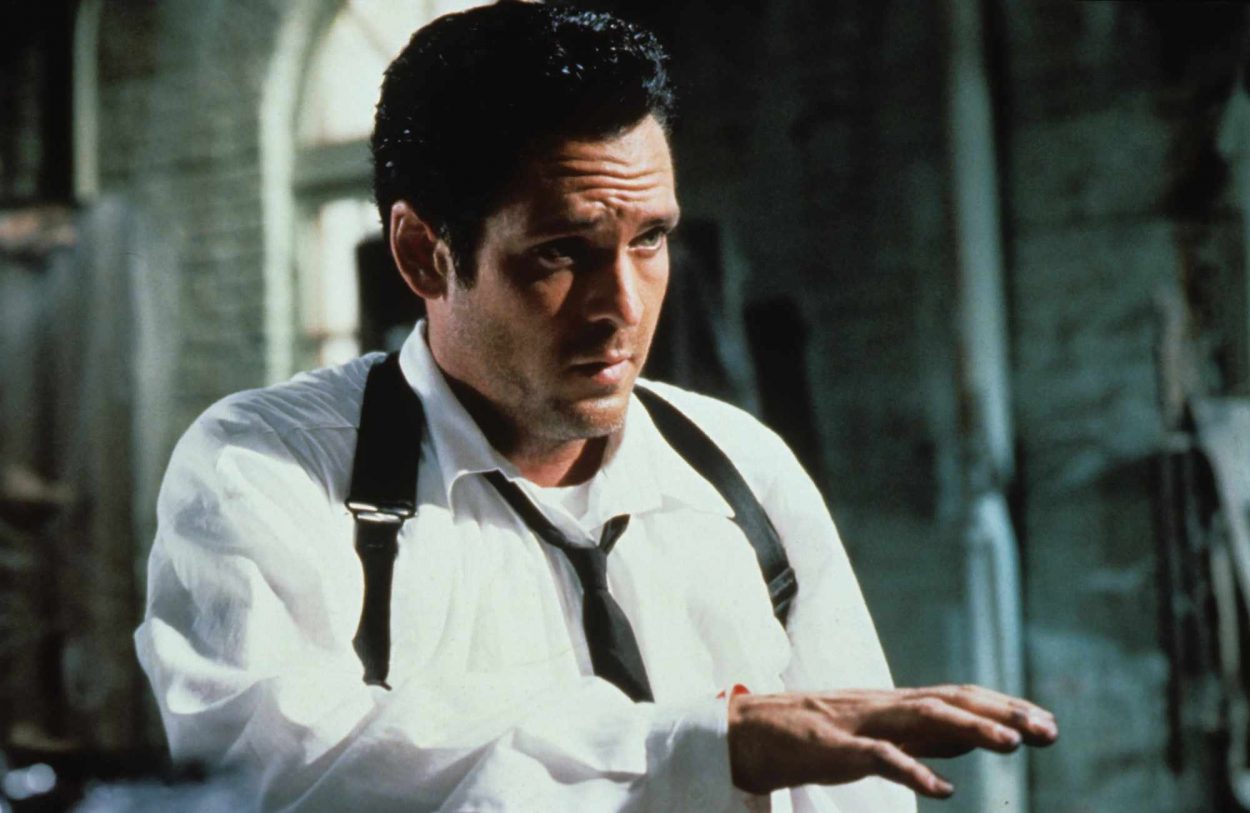A musical film was once released during a presidential election year. It was a highly-anticipated followup to a surprise hit from the same talent collective. It opened with an exuberant and elaborately-staged tribute to a world-famous city. And shortly upon its release, it swiftly became a target of ridicule, with critics ripping apart its song score, its leading actors, its whitewashing of a musical genre founded by marginalized people, and for being a corny unrealistic beacon of idealism in a politically depressed, heated, and divided climate where a former television personality turned right-wing firebrand was on the verge of becoming President of the United States. To this day, its title has become an instant punchline, a code term for blithe and reckless ambition.
That movie, of course, was the 1980 Allan Carr production Can’t Stop the Music. Though riddled with poorly-thought choices that has left it more often regarded with scorn and snark, it has nonetheless found a select audience that still regards it with genuine affection.
The ever-present bias applied to the body of music generated from 1976-1981 which has generally been ascribed to “disco” is ultimately an individual instance of a longer-standing conflict between select camps of music lovers over whether an experience that can be created by live musicians without outside augmentation is the true measure of talent, or whether material that has been crafted in the studio in such fashion that it cannot be exactly duplicated in public can be given equal respect. Jean Hagen’s antagonist is undone in Singin’ in the Rain because it is revealed that she cannot sing and dance with the same skill that her put-upon voice understudy Debbie Reynolds can. The Monkees continue to be denied entry in the Rock’n’Roll Hall of Fame because the voting body still perceives them as a manufactured band even though they proved extremely capable of writing and producing their own material on their third album Headquarters. Today, people on social media have likely already seen or will inevitably encounter recurring memes making erroneous (and frankly bald-face racist) comparisons on the worth of Beyonce vs. Queen or Led Zeppelin vs. Nicki Minaj.
Indeed, the very term “disco” is emblematic of the conflict. In a 2004 interview for DJ History, Henri Belolo, the French producer who, with songwriter/producer Jacques Morali, co-founded Can’t Stop Productions, the firm that fostered the Village People, explained the terminology:
[Vinyl] started to take off at the end of the war in France…At the beginning it was a mixture: band playing an hour and we are playing the records for half an hour…The band were a little jealous because I was playing a record with a 50-piece band, who were mixed, and they were live. And the clubs were not really equipped to play a band live…The band were not able to play rock & roll. I mean…they knew how to play jazz, but not rock & roll. The drummer, the bass player, they had to learn. And in the meantime the record was so magic, you don’t need the band any more. That’s where the first DJs started to come into the scene…When we started to play records we needed something with a sound more appropriate, and more cosy…So they called them discothèque, because discothèque means…Like a bibliothèque means shelves with books, discothèque is also a French word, meaning a place where you store your records…[And] often, in slang, when we are talking amongst us, instead of saying the long word, we just say “we’re going to the disco.” It was a place.

Another notable element of the disco era not often verbalized is how much of the culture is informed by fashion, songs, and cinema of the ‘20s and ‘30s. Some of this was certainly a carryover of the late-’60s resurgence of Humphrey Bogart, Mae West, the Marx Brothers, and other movie stars whose films had become ubiquitous on television and in repertory theatres. There is the obvious emphasis on glamour, with the slinky, shiny look of Qiana dresses, boldly colored men’s suits, and elaborate hair design. Both eras stressed the valued contributions of artists of color for music and dance, and offered a space where gay men and lesbians may not have been fully “out,” but felt comfortable enough to not have to pretend otherwise. And some of the earliest hit singles in the disco era were either throwbacks to the past, like Tony Orlando & Dawn’s “Say Has Anybody Seen My Sweet Gypsy Rose,” or sub-referencing the time like Chic’s “Dance, Dance, Dance (Yowsah, Yowsah, Yowsah),” the song’s parenthetical title a direct nod to the refrain uttered by dance marathon emcee Gig Young in the Depression-era drama They Shoot Horses, Don’t They, or outright modernized covers of classic standards, such as Harold Wheeler’s pseudonymous Wing and a Prayer Fife & Drum Corps performance of “Baby Face,” and The Ritchie Family’s “Brazil,” the first hit single to be produced by Henri Belolo and Jacques Morali, before their creation of the Village People.
All of this background provides a better lens with which to view Can’t Stop the Music. For as much as producer Allan Carr talked about the film as a modern Judy Garland & Mickey Rooney “Let’s put on a show” style romp that would also tell a fictionalized and heterosexually retconned history of the Village People, the plethora of kooky side characters caught up in the proceedings and pushing their own mini-agendas suggest that Carr and his Grease screenplay-adapter Bronté Woodard were also attempting to recreate the feel of a saucier screwball comedy of equivalent vintage; all the onscreen behavior is chaste enough to get an unquestioned family-friendly PG rating, but there is still plenty of coded elements, including full-frontal (albeit unarousing) male nudity, for savvy viewers. It feels deliberate that in the opening sequence depicting Steve Guttenberg’s “Jack Morell” taking a rollerskate jaunt down Times Square, of the freeze models embodying classic Hollywood goddesses who break character to cheer Jack on, it’s the ‘30s Jean Harlow impersonator that gets the most screen time. Casting June Havoc, who starred in one of the best examples of such comedies, Andrew L. Stone’s 1943 Hi Diddle Diddle, as Jack’s mother, suggests a definite hat-tip. And, while Carr’s choice of Nancy Walker to helm the project may have been a combination of couring good press for hiring a woman but wanting someone technically proficient who would otherwise defer to his wishes (Carr effectively directed the “Y.M.C.A. sequence himself), Walker, who had been directing for television while playing acerbic comic relief on “McMillan & Wife” and “Rhoda,” was a veteran of that earlier style of filmmaking, like Havoc, and would thus know how to explain and draw out such an otherwise abandoned kind of line delivery and acting from a young cast inexperienced with that genre.
Glamour and play (and the excess of both) were as integral to the popular culture of the Depression era of the ‘30s as they were to the Recession era of the ‘70s, but it seems that in the latter period more people had trouble grasping that such light-minded behavior was never meant to exacerbate a divide between haves and have-nots, it was a means for several have-nots to cheekily present themselves as haves. Yes, maybe you needed to invest some time in learning dance moves or putting together a striking wardrobe, but you didn’t need to be rich or influential to stand out in the scene, you just needed to be interesting. But in the rise of what President Jimmy Carter described, in his July 15th, 1979 address, as a “crisis of confidence,” many wanted to hold disco responsible for all things irresponsible, inauthentic, and vapid. Devo founding member Mark Mothersbaugh once described the music as, “like a beautiful woman with a great body and no brains.” Clearly, when he made that dismissive remark, he had never been exposed to songs like “There But For the Grace of God Go I” by Machine, which uses an infectious groove to tell a sobering drama of race and class denial, pulling no punches about how its parental protagonists hope “no Blacks, no Jews, no Gays” will mean a better life for their child, only to see her fall victim to the vices they sought to escape. Chic founder/producer Nile Rogers addressed this perception bias in a 2014 interview with Vulture:
[The] “Disco Sucks” backlash in 1979 shut down our lives. People don’t realize that the life span of Chic was really just three years. We had a little bit of payback during that whole “Disco Sucks” thing – that year the Pittsburgh Pirates won the World Series, their song was “We Are Family.” So while one stadium was being burned and ravaged, the other was celebrating with disco. The thing is, all the rock-and-roll guys were all our best friends. John Deacon from Queen, who wrote “Another One Bites the Dust,” was in the studio with me when I wrote “Good Times.” Debbie Harry and Chris Stein turned us on to hip-hop and let us know our music was being used to spawn this whole new movement. Punk-rockers used to think of Chic as the ultimate cool band. Meanwhile, the industry was pitting rock and roll against us. So the backlash didn’t come from the musicians. White working-class Midwest fans looked at this hedonistic culture dominated by ethnics and women and gay people leading lives that were completely over the top – these guys working at the Ford factory or wherever were like, We’ve gotta work like this and you don’t have to work and go to Studio 54 and party?
One does have to wonder if there has always been an inherent inclination to distrust what stirs endorphinal pleasure and believe that the only worthwhile art is that which is loud and discordant. When the Hays Office imposed moral strictures and finishes upon Hollywood filmmakers, comedies continued to be made, but they often felt like declawed cats, while the comparably nihilistic world of noir, where bad deeds may be punished but good souls were left with ruins, thrived. During the making of Head, the Monkees’ own creators taunted them between takes by playing decidedly harder records by bands like The Electric Flag and saying, “That’s real rock’n’roll.” Mid-’80s youth-oriented pop was openly ridiculed and soon supplanted by testosterone-fueled metal and angsty complaint rock, and when boy bands had a late ‘90s high, there was nu-metal and emo to chase them away with their sound of what was “real.”

So, no, Can’t Stop the Music is nowhere close to a “real” depiction of starving artists, band creation, gay identity, New York City, or really any kind of recognizable human behavior on the planet Earth. Nor was it ever intended to be so, any more than George Cukor’s Sylvia Scarlett was meant to be a real portrayal of grifters and living as a cross-dresser, or James Whale’s Remember Last Night was meant to be accurate about alcoholic behavior or murder investigation. They were about fun and diversion using pop cultural elements of the day. Besides, many of the talent involved had surely endured their fill of the reality of the heteronormative world and how it regarded people like them, and determined that like-minded audiences were seeking similar escape. Whether their execution was successful or not, then or now, is a decision for the viewer, Yet unlike other perceived flops released in the same calendar years, somehow these were each regarded as a referendum on their subjects and/or the creative team making them. Katharine Hepburn was branded “box-office poison” after Scarlett, Remember has virtually disappeared from circulation, and there’s been no stop to the parade of Can’t Stop jokes ever since. As such, it’s hard to not suspect that there were too many parties taking a little too much pleasure in these projects’ failure to connect or succeed.
In hindsight, nobody directly involved with Can’t Stop the Music suffered too badly afterward. Its backers EMI eventually left the film business a few years later, but still managed to fund enduring favorites The Elephant Man, Tender Mercies, and Highlander despite the losses of this project. Allan Carr continued to produce movies and lavish events, often courting more snickers, but always getting attention and the last laugh. Most of the cast advanced to better-received work in their strongest fields. Even the Village People themselves, while finding themselves quickly relegated to a nostalgia act in America, found sustained fortune and more hit singles overseas.
Sadly, the only significantly injured party was disco itself, and its inclusive spirit. Technically, as the musicologist Michaelangelo Matos once wrote, it did not die so much as go into witness protection. Titans as Giorgio Moroder, Donna Summer, Arif Mardin, and Barry Gibb remained in demand. And many of the Top 40 hits and hitmakers that defined the first half of the ‘80s – Human League, Eurythmics, Erasure – were offering the same kind of danceable beats and lush arrangements that had previously made many a platform heel twirl. But now, these artists made “dance music” or “techno” or “house”; disco was the genre that dare not speak its name. Meanwhile, where the discotheque had been the multiracial pansexual playground where as long as you could be open-minded and creative you could find a home, the scenes ultimately fractured into smaller tribes that, burned by the larger society making tired demeaning jokes at marginalized peoples’ expense, now discouraged crossover.
Just before the film’s national release, Allan Carr had made the unprecedented step of buying a five month lease on a prime Sunset Strip intersection to put up a billboard for Can’t Stop the Music. Which meant that after its premature departure from theatres, it still stood for months past its viability as a promotional tool. For many, it became a laughable symbol of overconfidence and hubris. But perhaps there were some, including this author, who saw it as a serendipitous opportunity for defiance. Maybe the film was out of theatres, the songs were off the radio, and the angry white men were taking power yet again, but this testament of fabulousness was not going to go away quietly, but stay put as long as it so chose.

Now, nearly 40 years later, be it for camp, irony, infamy, or nostalgia, attention is still being paid. And really, that was what defined success in the first place. So…yes…they Couldn’t Stop the Music. It just needed…a disco nap.


